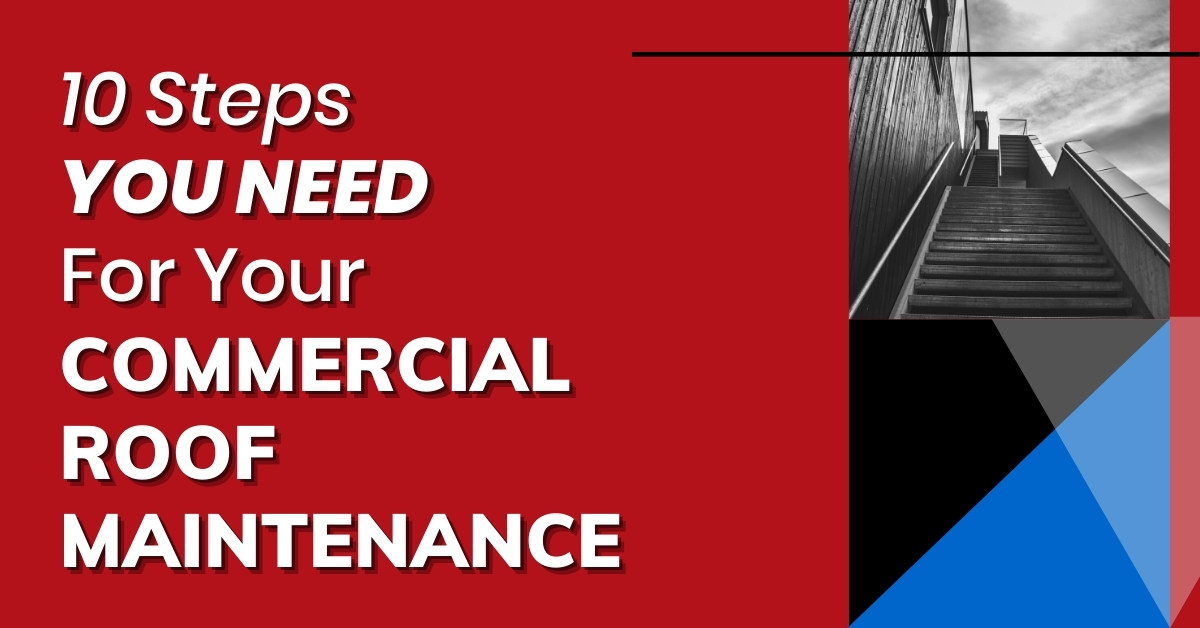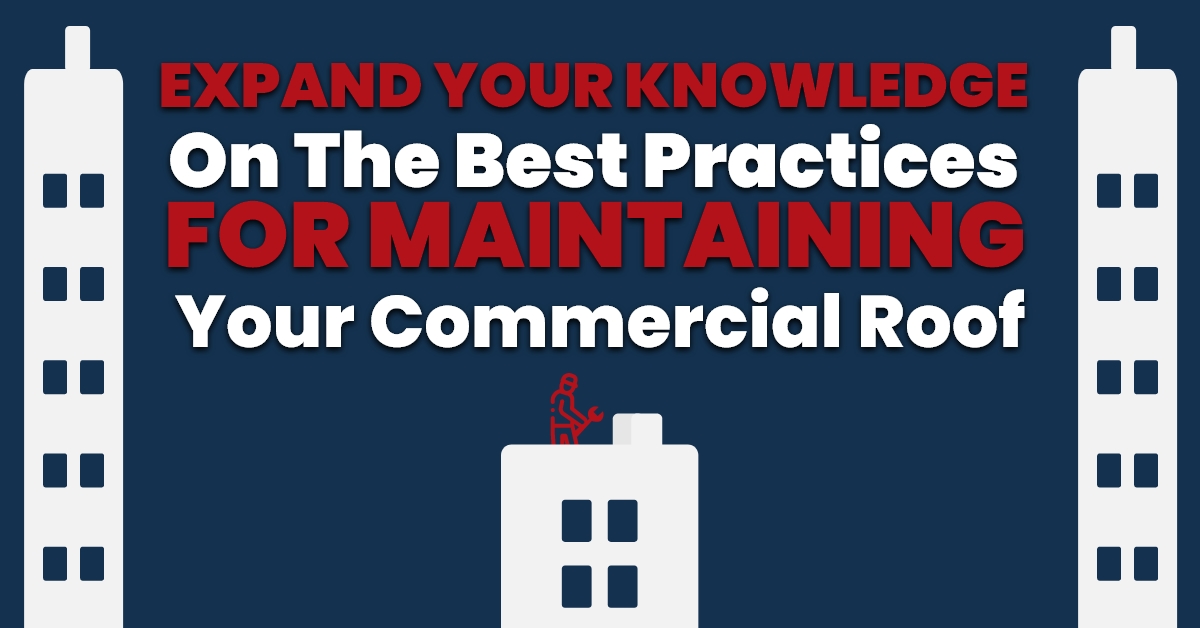Clearing your To-Do list is every building owner’s goal every day, but with commercial roofs, most commercial property owners simply don’t know what to watch for, and what to ignore. Consider these 10 hot tips for dealing with commercial roof maintenance.
1: Guestbook
Record the name, title, and purpose of every visitor to your facility’s roof. Restrict access so people cannot climb up without supervision, or without good reason.
Workers’ boots can scrape away ballast, tear into single-ply membrane, or kick out flashing. Third-party workers obviously need access to items like radio masts, HVAC units, window-washing equipment, and signage. Yet these workers also need monitoring. Keeping a running record of roof access preserves your roof assets.
2: Visual Triage
When you safely walk your low-slope commercial roof, perform a visual triage of every item you inspect:
- Good — No action by your facilities crew or your dependable, local commercial roofer is needed now
- Fair — A condition is developing which requires careful monitoring, but no further action at this time
- Bad — Immediate attention, repair, and correction is needed
For every item marked “Fair” or “Bad,” record where it is situated on your roof, take pictures or video, and jot notes on the exact concerns you have. Then use this information when working with your local commercial roofing contractor, so nothing is overlooked.
3: Pack a Bag
Keep a rooftop access toolkit on hand. Use it when walking the roof by yourself, or when working with your roofing contractor. Essential items to include:
- Component checklist
- Pad and pencil for taking notes
- Camera or cell phone for taking pictures
- Roof plans or aerial photos
- A tape measure
- An LED flashlight for dark areas
4: Walled Up
Less dangerous than a rooftop excursion is an inspection of your building interior. Look at your walls, especially those closest to the roof deck. Do you see telltale signs roof problems are developing?
- Signs of mold or mildew
- Dark spots
- Peeling paint or wallpaper
- Dampness
- Crumbling drywall
Look higher than the walls; are drywall or drop ceilings showing stains, discoloration, or active water leaks? All of this information will help your roofer determine a course of remediation.
5: Damp Spots
Damp areas around vents, chimneys, roof projections, or exterior walls generally indicate rooftop problems. Feel the walls. You can also apply a moisture meter if you feel the investment is worthwhile.
Exterior walls are prone to leaks between roof fields and flashings. Chimneys and roof piercings can leak if flashing or caulking fails.
6: Airing Your Problems
Good ventilation throughout your building is key to a healthy roof. Does your roof deck itself have proper ventilation? If you can see into the deck, do you see sagging decking, cracks in wood rafters and structural supports, or corrosion in steel?
Can you see light streaming in from the roof, inside the roof deck? Does the air smell fresh or musty? Can you see mold or mildew on any surface?
Adequate roof ventilation gives your environmental systems a break; interior, treated air has to be both the right temperature and humidity for human comfort. Roof deck air should closely match the outside air.
7: Leaks
Record as much information as you can about existing leaks, from tiny drips to raging torrents. Your roofer needs to know where the leaks appear inside the building and if any damage on the roof is visible.
Avoid asking your untrained facilities crew to try to solve roof leaks. Especially in low-slope structures, an open seam on one part of the roof could be causing a leak inside the building 50 feet away.
8: Three Ds
If you can safely walk your roof, look for visible and obvious signs of damage, deterioration, and debris.
- Damaged roofs never mend themselves. Note the extent of the damage and its location
- Deterioration is normal but may accelerate due to deferred maintenance or outright neglect
- Debris can clog exterior scuppers or internal drains; blocked gutters and downspouts lead to leaks
9: Wear & Tear
On the roof, safely inspect flashings, chimneys, vents, fascia, drip edges, HVAC curbs, and other structures. Look for wear and tear, corrosion, rot, or rust. Note every issue for your commercial roofer’s reference.
10: Poke & Prod
On low-slope or flat roofing, if you feel comfortable and conditions allow, look for ponding (depressed areas accumulating water), holes, blisters, crazing or tears in membrane, and separation between roof and material.
Test seams; inspect mechanical fasteners for elongated holes indicating thermal expansion and contraction. Note any issues for your roofer.
In the Denver and Fort Collins area, Red Diamond Roofing is your trusted ally in commercial roofing. Contact us today to learn more about proper maintenance of your company’s commercial roof!



 Your commercial roof keeps your building safe from the elements, as long as it remains in good condition. This requires routine maintenance to clean it and check for problems that need to be addressed. Since your roof is such an important investment, it’s essential to know how to properly maintain it.
Your commercial roof keeps your building safe from the elements, as long as it remains in good condition. This requires routine maintenance to clean it and check for problems that need to be addressed. Since your roof is such an important investment, it’s essential to know how to properly maintain it.
